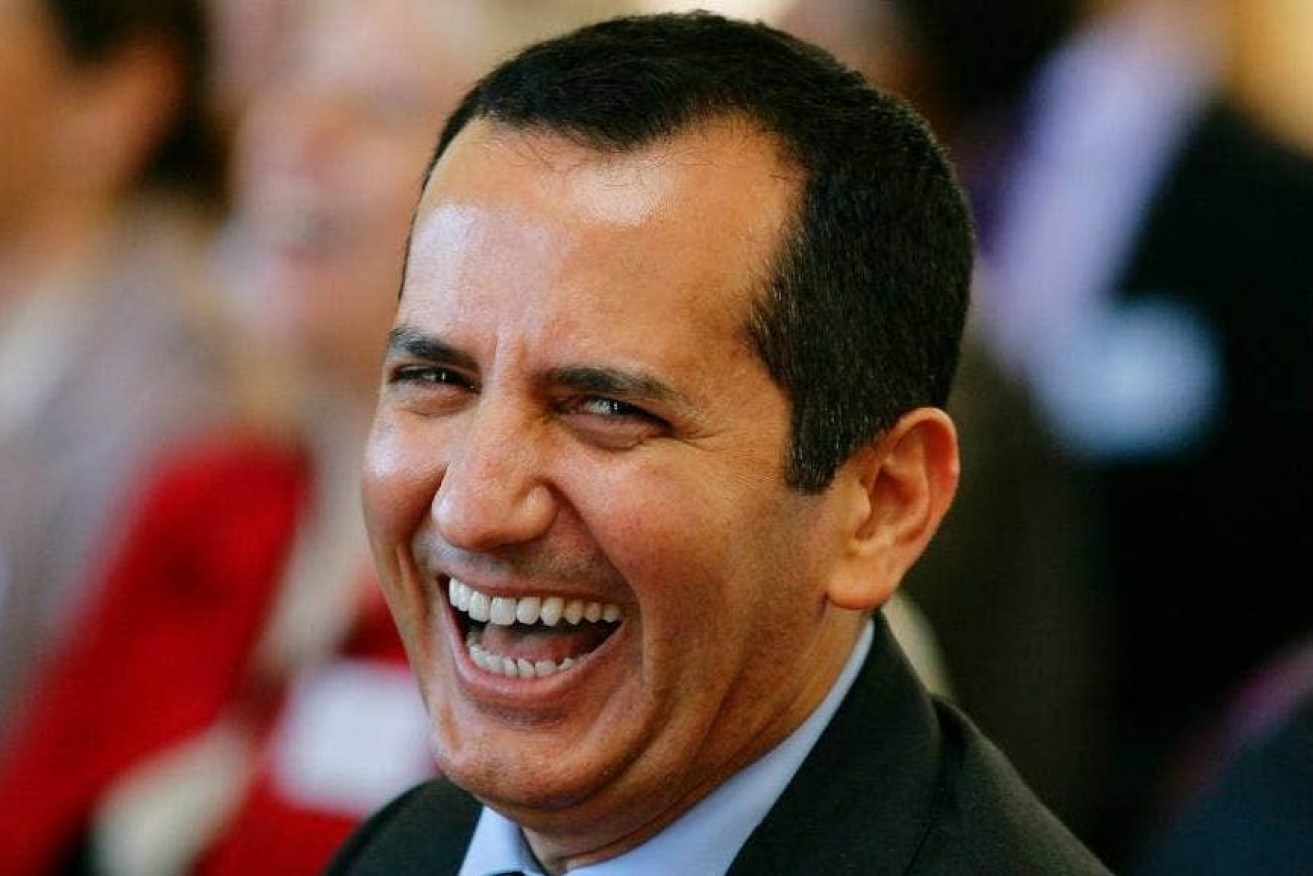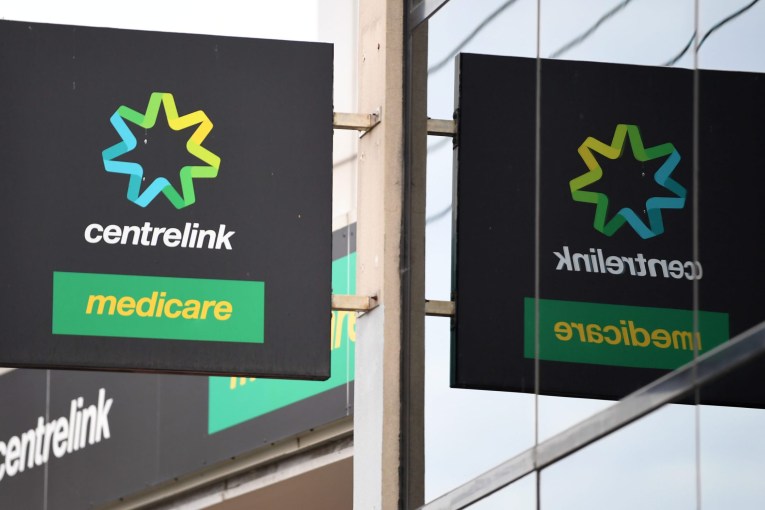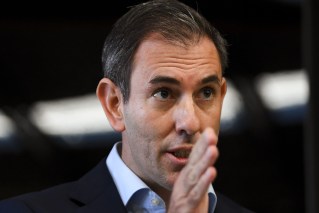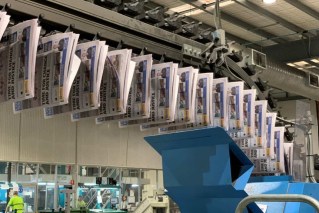Did Qld’s own bank give its shareholders the runaround, costing them $100 million?
When Bank of Queensland hurriedly made shareholders ‘an offer they can’t refuse’, investment banks raked in millions while many existing shareholders missed out. Stephen Mayne investigates

Bank of Queensland managing director George Frazis will be replaced after three years in the role. (file image)
If a couple of global investment banks conspired with their big institutional clients and the directors of one of our ASX-listed banks to “steal” more than $100 million in value from tens of thousands of Australian mum and dad shareholders, there would be outrage, right?
Wrong.
While “steal” is a strong word, on some readings that’s precisely what has happened at the Bank of Queensland after it agreed to buy ME Bank from Australia’s industry funds for $1.32 billion.
To pay for the deal, these Bank of Queensland directors turned to investment banks UBS and Goldman Sachs to determine how they would raise $1.35 billion in a great rush — even though the acquisition isn’t expected to settle for another four months.
The BoQ board should have joined the long list of companies that launched a so-called PAITREO capital raising. This structure treats all shareholders equally by offering everyone the same pro-rata entitlement to new shares but fully compensates non-participants by selling their lapsed entitlements to the highest bidder in a competitive auction.
Instead, the ASX100 company with one of the most retail-heavy share registers came up with a capital raising structure that has so far delivered windfall gains of almost $150 million to institutional investors and their investment banking advisers. And no one seems to care!
There were two clear problems with the equity-raising structure. First, the $350 million institutional placement locked out retail shareholders and was priced too cheaply at $7.35. The placement price should have been set by a competitive bookbuild, rather than the old school fixed-price model, and it would have been better to wait for the market to react to the positive ME Bank acquisition news before auctioning off the new shares to the highest bidder.
The market loved the ME Bank deal, and BoQ shares soared almost 7% on the day of the announcement. The stock closed at $8.74 yesterday, meaning that the unknown institutional backers of the $350 million placement are already enjoying paper profits of $66.2 million, or 19%.
But it gets worse. The board also unveiled an accompanying $1 billion 1-for-3.34 entitlement offer for existing shareholders, but this was non-renounceable, meaning that non-participants were diluted without compensation and their in-the-money entitlements were given to the clients of underwriters UBS and Goldman Sachs.
In this situation, retail shareholders are often allowed to apply for unlimited amounts of additional shortfall shares, or “overs”, to pick up the shortfall from their retail colleagues. This means retail shareholders aren’t diluted as a class — although there are winners and losers within the retail category.
However, in what was clearly an attempt to maximise the retail shortfall, BoQ decided to limit the “overs” facility for retail investors to just 35% of entitlement. If you owned 334 shares going into the 1-for-3.34 offer, this meant you were entitled to 100 new shares and could also apply for an additional 35 if there was a shortfall.
The investment banking and directors club know that retail shareholders are notorious for not acting rationally and taking up an in-the-money offer. This is partly because the various middlemen involved in the system quite often don’t even tell retail shareholders about a capital raising opportunity.
Surprise, surprise. The hefty $682 million BoQ retail offer ended up finishing $274 million short, as only $408 million came through the door from an unknown number of retail shareholders. This comprised $336 million in entitlement applications and $72 million from the “overs” component, leaving a 40% shortfall.
Contrast that with the earlier $323 million institutional component of the $1 billion entitlement offer which was 98% supported by eligible applicants.
“Take it up or get diluted,” the directors said with a gun pointed at the head of institutional investors. They took it all up in just 48 hours.
A similar threat, albeit on a slightly longer time frame, to 110,000 retail shareholders saw a clear majority of them get diluted without compensation.
The timeframe is also quite scandalous here because the retail offer was so rushed that a number of retail investors have complained they didn’t receive the snail-mailed documentation until it was too late.
The 119-page offer document was lodged with the ASX and dated March 1. However, the closing date was just eight business days later, March 10, so if you are an elderly shareholder sitting in regional Queensland who doesn’t do internet banking and relies on sending cheques, it was most unlikely your cheque would have arrived in time.
All up, through the $350 million institutional placement and the $274 million retail shortfall, Bank of Queensland ended up issuing $624 million of cheap equity to institutions at $7.35 which should never have been issued.
Based on the Wednesday’s close of $8.74, this has so far delivered paper profits of $118 million — a straight value transfer from the retail class to the big end of town.
The investment bankers for this deal, Goldman Sachs and UBS, were paid a minimum $21.6 million in underwriting and management fees, and the board has discretion to pay an additional $8.8 million for their good performance.
That’s potentially more than $30 million in rewards to two of the world’s biggest investment banks for taking limited real risk and ripping off the estimated 70,000 BoQ retail shareholders who declined or were unable to participate in this offer and were consequently diluted without compensation.
The wash-up of all this is that retail investors now own only 60% of Bank of Queensland, down from 67.8% before the $1.35 billion ME Bank and associated capital raising was announced.
And every aspect of this bank “robbery” is entirely legal under Australia’s anything goes capital raising system.
Stephen Mayne is a shareholder activist and founder of the website Crikey. This article was first published in Crikey and is republished with their permission












